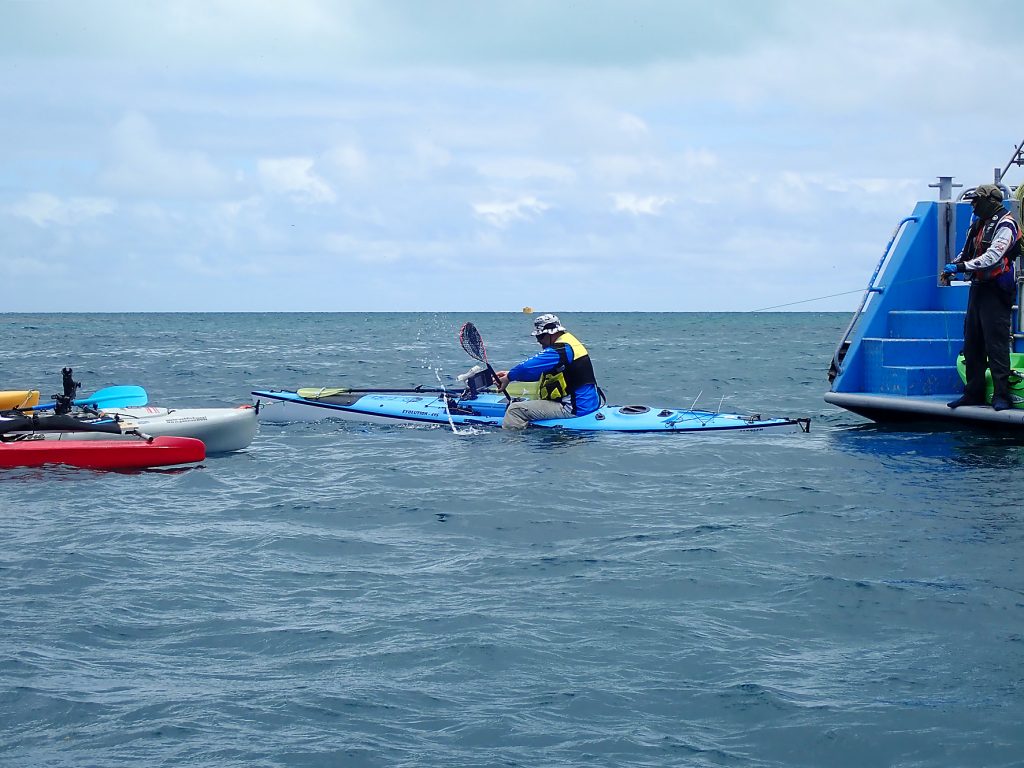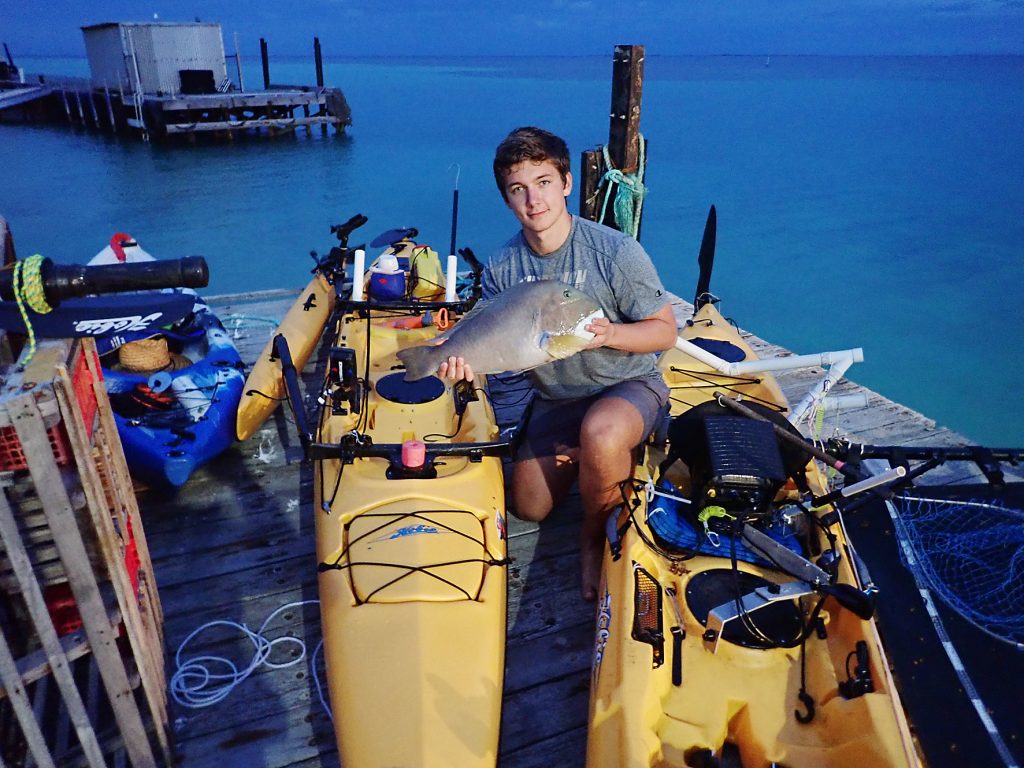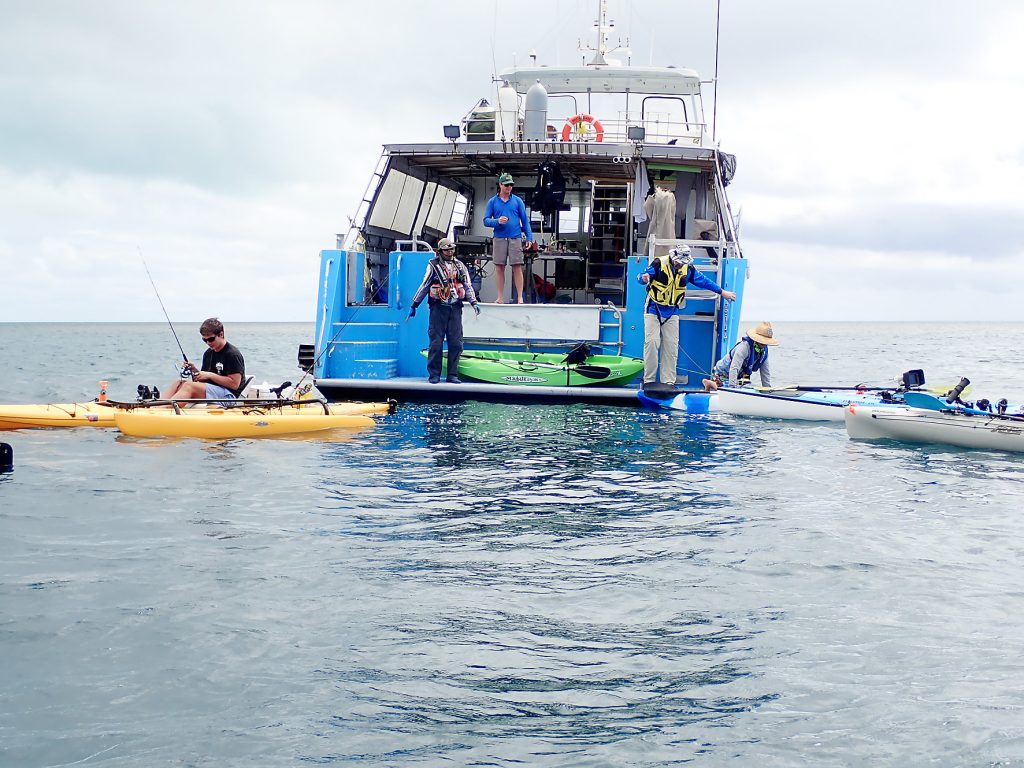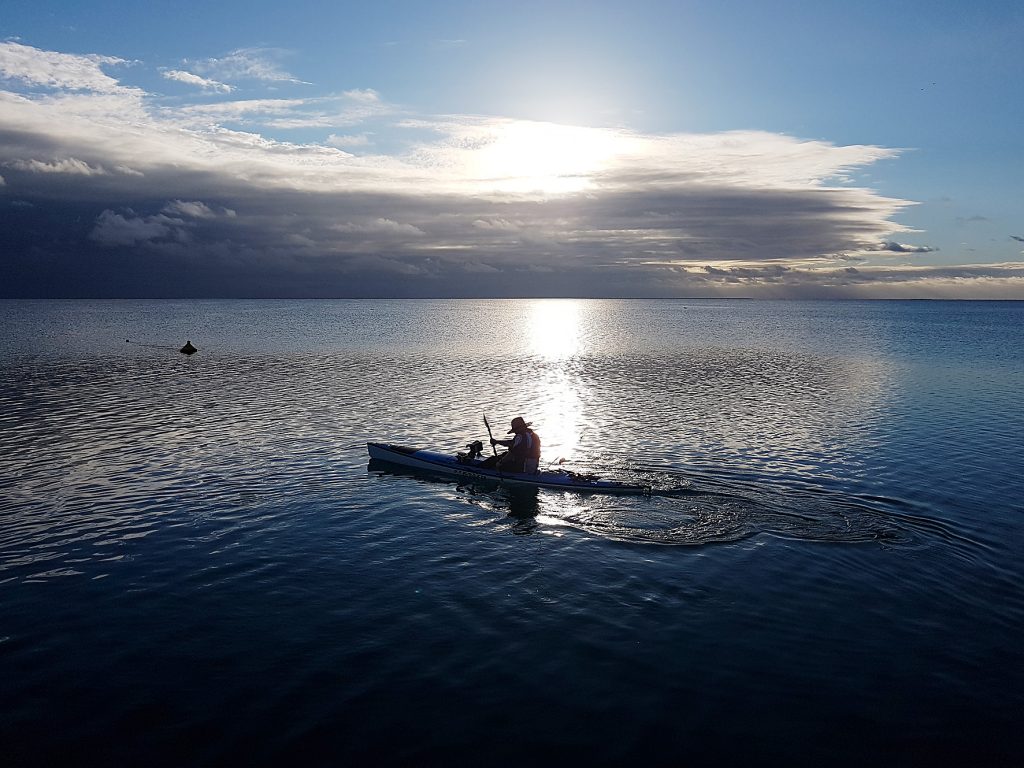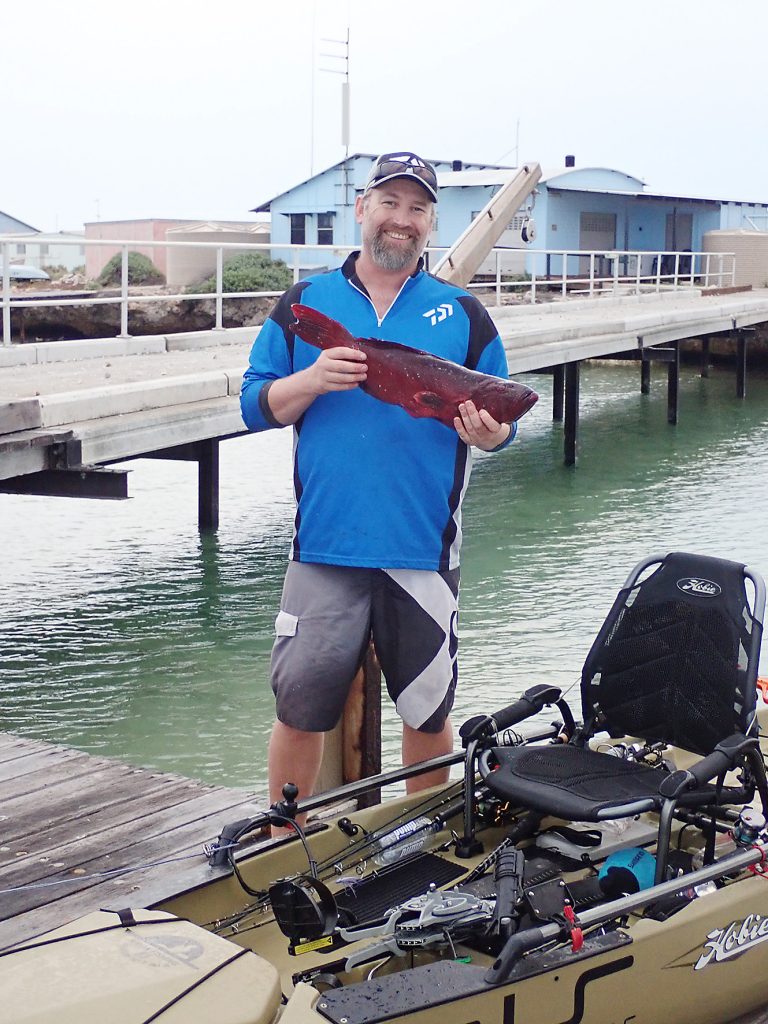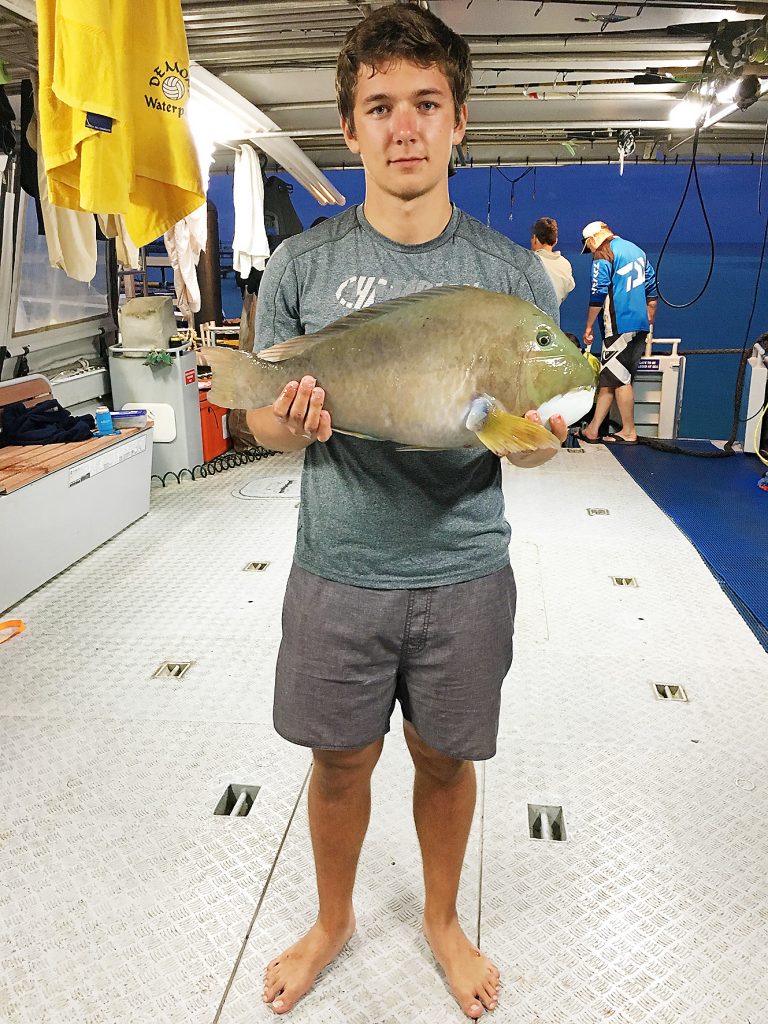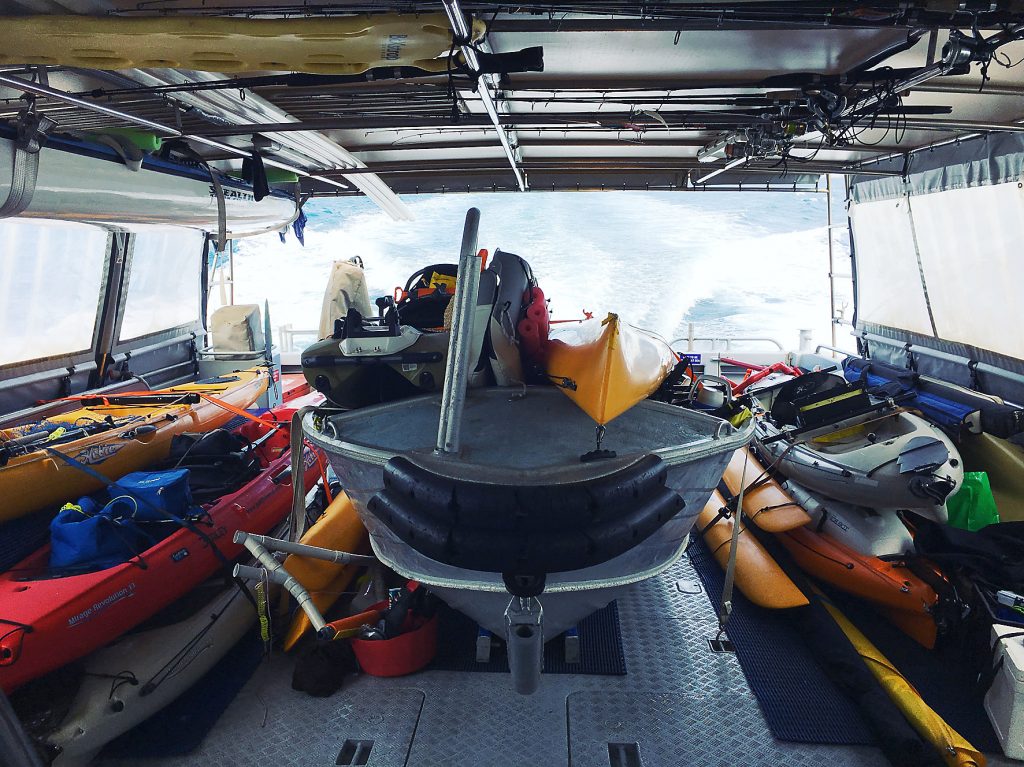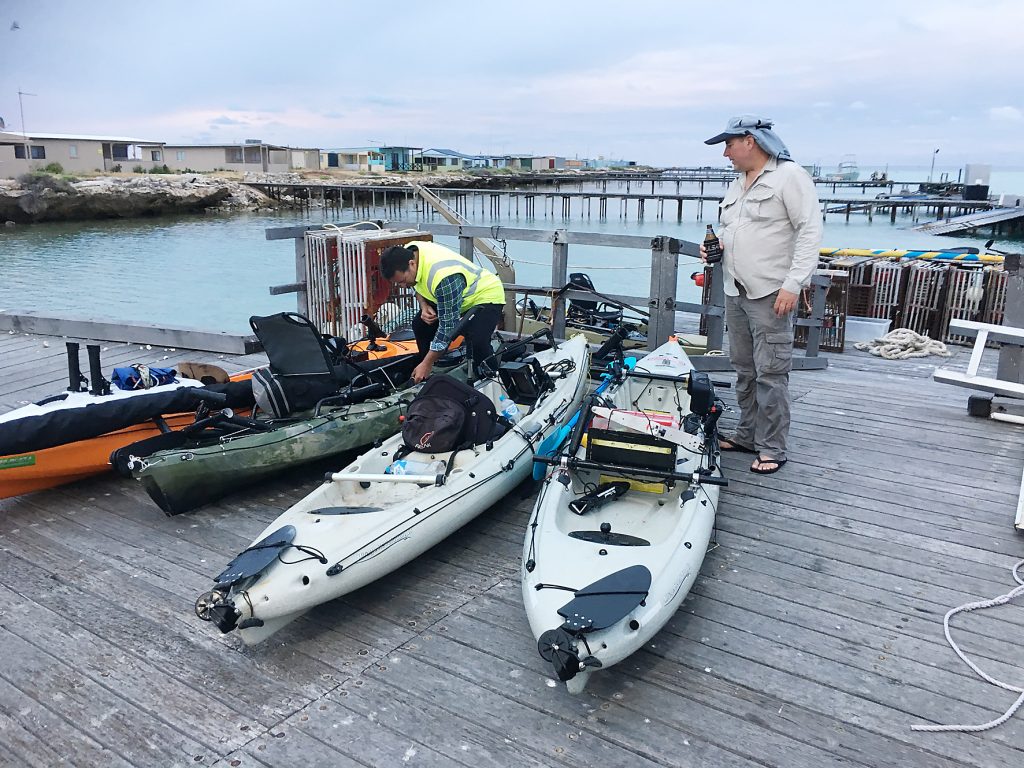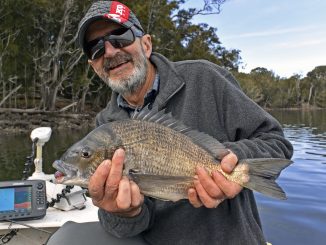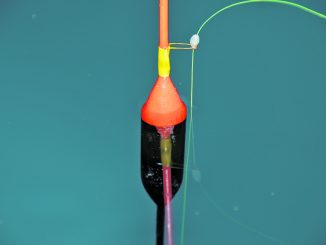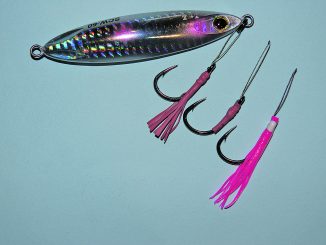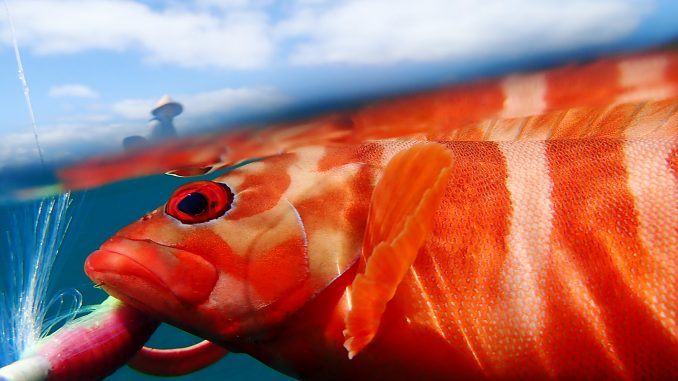
by Luke Doherty •
It’s 6:30 in the morning and the sun is up but behind light cloud cover so everything has an orange hue to it. The rod in your hand bounces as something nudges your lure. The rest of the world disappears and you’re holding your breath waiting for the next bite. That’s when chaos erupts around you, the rod in the rod holder behind you jerks violently and almost tips you out of your kayak. The rod you’re holding buckles over at the same time, probably saving you from capsizing. This is what offshore kayak fishermen are looking for, the feeling of being on the edge and the adrenalin that comes with it! Some kayakers want to be closer to that edge than others, and its for this reason that offshore kayak fishing isn’t for everyone.
The trip to the Houtman Abrolhos Islands took weeks of planning and preparation. The call went out in late August, when Central Regional Tafe announced they were running a three-day Kayak Training Course. Spots filled and the dates were set for early October. It was going to be one last effort before the West Coast Demersal closure started.
We would be loading our kayaks onto the Masterclass, the Tafe’s 20m boat, traveling across to the Islands to fish and complete a competency course in kayak fishing.
The trip out
Almost immediately, the nightly preparation started, checking safety equipment, watching the weather, checking our kayaks for sea worthiness, replacing older gear, servicing and respooling reels, looking over nautical charts and researching as much information on the area we expected to fish as possible. Fortunately, the biggest hurdles were handled for us. Getting to the islands, food and sleeping arrangements were all taken care of as part of the course. On the boat would be anglers from different backgrounds, ages, skill levels and fishing styles. Amongst the kayaks that were loaded onto the Masterclass were a variety of pedal and paddle kayaks, with everything from the most basic paddle kayaks right through to rigs worth thousands of dollars. The one thing everyone had in common was a passion for kayak fishing.
Waking up on the deck of the boat, the first day was a short one. After about 3 hours cruising across to the islands from Geraldton, a few of the kayakers on board were feeling seasick or shabby from the antics from the night before. It was slow going getting ready, not knowing what to expect, and most of the group didn’t have rods rigged or gear stored in a way that it was easy to unpack and launch.
Into the fishing!
Day 1
Once everyone had prepared and launched, it was time to get stuck into some fishing. Starting northwest of Rat Island working over the shallow reef and deeper sandy patches, baldchin groper and trout were the main target. In the ledges and holes in the reef, most of the anglers in the group caught something.
The sharp staghorn coral was shredding leaders and a small front was starting to build further out to sea. Overcast and humid, with very little wind, it was time to stop for lunch. Returning to the Masterclass, kayaks were tethered to each other out the back of the mothership.
After lunch, most the group got back into their kayaks and continued fishing, working their way back across the 7km to the Fisheries Jetty on Rat Island. For those who didn’t head back out on their kayak, an afternoon dive for crayfish rounded out the first day.
Dinner that evening was coral trout and baldchin grilled on the barbeque along with a couple of crayfish from the dive.
After dinner and some course work it was back to fishing, with the lights on the boat were bringing baitfish in close. Squid were starting to hang around along the edge of the light. Casting squid jigs out beyond the range of the light, then slowly winding them back in was enough to get the Tiger squid to follow the jigs back to the boat. Dangling the jigs in the water over the back end of the boat and having a little patience while the squid got up the courage to grab hold resulted in fresh squid for sashimi and bait the following morning. It was time for bed and with no camping on the Islands we slept on the boat.
Day 2
Day two was forecast to be the best weather for the trip, low winds early and a storm forecast for later in the day. There aren’t many places in Western Australia where you can watch the sun rise over the water. It’s worth the 4am wake up, just to watch the light creep across the sky and hear the islands wake up.
After quietly contemplating the mysteries of the universe over a cup of coffee it was time to launch. Heading north from the boat, out of the shelter of reef, which runs along the drop off on the east of Rat Island, it didn’t take long to find the first school of snapper. Schooling on the leeward side of a navigation marker in a depth of about 15m.
Holding just off the bottom, a 1oz, 5/0 Abrolhos Tackle Projectile Head with a 5-inch Mcpaddle soft plastic was the first offering to get taken. Left sitting in the rod holder while a second rod was being rigged, the slow drift and small bounces from the kayak moving was enough to entice a bite. Seven more fish followed the first, and were returned to the water.
Leaving one rod in the rod holder and casting ahead with the other resulted in a few double hook ups, with many fish unhooking themselves while another was being reeled in. It wasn’t long before a few other kayakers from the group headed over and joined the fun.
Getting a little crowded with several kayaks working over the one school, it was time to move on in search of some baldchin groper and trout in the nearby reef. A quick radio call and a buddy was ready to do some exploring. A short northerly paddle later, in 30m, another school was located. This time it was a mixture of snapper and samson fish. The sambos didn’t fare too well after the sharks moved in though.
In the reefs around White Bank a smaller lure turned up a variety of smaller reef species. Casting a 5” ZMan PaddlerZ on a 3/8oz jighead hard against the reef and then slowly retrieving so the lure presented just above the coral helped to land one of the many baldchin that were caught during the day. Others had success with similar techniques and stickbaits worked across the shallower spots in the reefs targeting trout. Lunch was had back on the boat and a quick snorkel along the reef around White Bank before heading back to the fisheries jetty finished the kayaking for the trip by early afternoon.
Taking the Masterclass out that afternoon, a few snapper were caught dropping lures on the edge of some of the outer most reefs. Two or three were kept for the barbeque that evening.
Day 3
Day three was blown out. Waking up before the 4am alarm, it was easy to see that the forecast storm was howling around us and it was too windy to be fishable. After a quick discussion, everyone went back to sleep. We were catching the very edge of a storm that hit Perth with winds that damaged houses. After sunrise it was obvious that the wind wasn’t dropping, so we departed the islands early. The trip back took us through the middle of the whale migration, which made up for the lost day of fishing, almost.
Lessons learnt
There are three stages to planning any offshore kayak fishing trip. Stage one is always going to be deciding where to go; picking a destination, exploring the fishing options and identifying the challenges that will need to be overcome to have a successful and safe trip. While the boat and destination were planned for us, the rest of the planning was left to us to do on our own. As there is only a small number of people who have gone to the effort of taking kayaks to the Abrolhos, there was very limited information available from among the kayak community.
Looking over Navionics charts and reading over trip reports from boaters who had spent some time in the area were the most reliable sources of information available. This helped to narrow down the target species and areas to fish. With a little bit of reading and some informed guessing, it was also possible to get an idea of what the conditions would be like in the areas we expect to fish. Protected from the swell by reef, the most obvious challenges would be currents and wind. Geraldton Volunteer Marine Rescue provide two or three weather broadcasts over the radio throughout the day. These updates are extremely helpful in planning the days fishing and learning about any changes to the forecast that might be a problem.
The second stage is preparing yourself. Kayak fishing is physically and mentally demanding. Sitting in a kayak, adjusting your weight to stay balanced and maintaining your posture takes focus and practice. It also slowly saps your energy, wearing you down. It’s usually not until you get out of your kayak that you realise how tired and sore your muscles are. To fish several days back-to-back takes conditioning and a certain level of fitness. There is no getting around this, whether you paddle, pedal or sail your kayak, at some point you will experience the aches and pains that come with sitting for hours on end. The best way to make sure this doesn’t impact on your trip is to make sure that you spend plenty of time in your kayak in the weeks leading up to your trip. This will condition your body to the stresses put on it while fishing. Practice will also help build your confidence and give you a chance to refine your technique if you’re paddling. A clean, efficient paddle stroke or a regular cadence in your pedalling will make travelling between spots easier and help save energy.
Practicing deep water re-entry is another key part of preparing for any trip. No one enjoys it but it’s a core skill for any offshore kayakers. There isn’t always an option to swim your kayak to shore to climb back into your kayak on your own. Even the more experienced kayakers will find that they experience a sudden rush of adrenaline when they capsize unexpectedly. Adrenaline gives you an initial burst of strength but leaves you feeling sluggish and weary very quickly. Making sure you can complete re-entry successfully in the first few attempts is critical.
The third step is preparing and packing gear. This is the most difficult and time-consuming step. Researching the area and target species will make it easier to choose tackle and rods. For most trips, 2-3 rods is more than enough. One lighter rod for gathering bait and targeting smaller species and 1-2 medium weight rods should handle just about everything else. Keeping a 2-4kg rod with a small 1000-2000 size reel with you is great for catching fresh baits like squid, wrasse and other baitfish. Keeping two rods in the 7-10kg range with a 4000-5000 size reel, spooled with 30-50lb line should be more pulling power than most kayakers will be comfortable using.
Preparing a kayak is all about compromises. After going over it to make sure the hull is in good repair and water tight, you need to start working out where to fit all your gear. Most of the challenges will be about storing safety gear and most kayakers will have their kayak rigged in a way that suits their individual needs. Making sure its quickly accessible is important, what you store on the deck and what can be stored in the hull is going to depend on where you are fishing.
In the Abrolhos, being as remote as it is, flares, a VHF radio and a Personal Locator Beacon (PLB) could save your life, if you can get to them. A PFD with pockets is a great way to keep your PLB and radio on you without them getting in the way. A RescueME electronic flare is a great alternative to keeping pyrotechnic flares in your pocket. While it’s not a replacement for handheld red flares that are required to be carried, the small handheld LED lights emit bright red flashing light and can be stored without too much concern in a pocket. Other signalling options are small mirrors and torches.
Spare parts and tools are something that most kayakers overlook when preparing for a trip. A nut comes loose, a pedal drive malfunctions or a seal on a hatch starts leaking – these are all issues that can be dealt with easily if you have the right tools on hand, and without fixing them they can turn into bigger issues and derail a trip. Duct tape, any tools you need to service your gear and spare parts for anything that is prone to breakages is a good idea.
This trip really highlighted how easy it is to get to areas that are usually only accessible to anglers fishing from boats with a little planning and some in-depth research. Kayak fishing in the Abrolhos is one of the many amazing fishing experiences that Western Australia has to offer. It’s proximity to Perth, abundance of reef and diverse fishing will make it a bucket list location for generations of kayakers to come.

